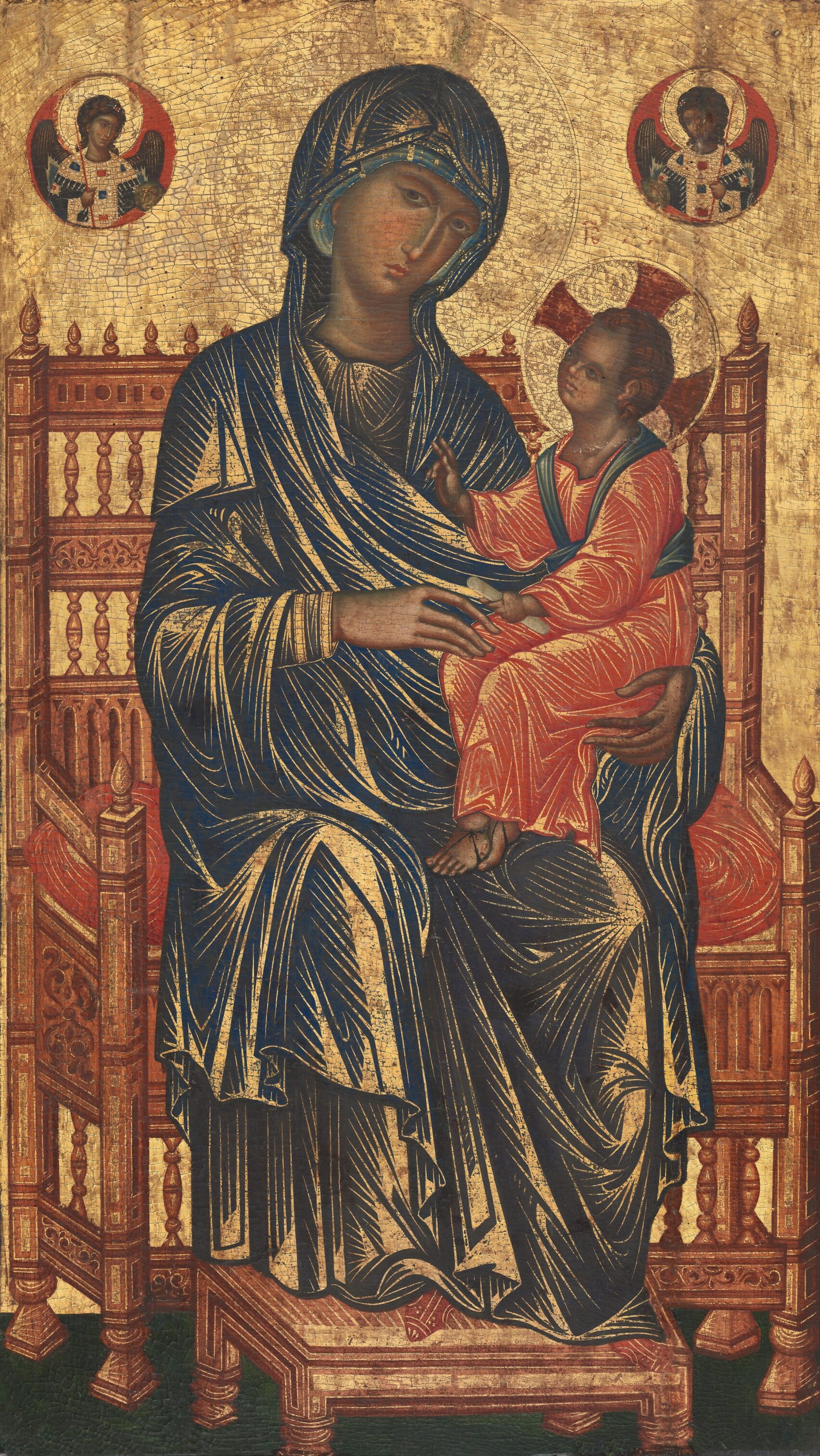
Courtesy of the National Gallery of Art, Washington, D.C.
Overview
The composition of this Virgin and Child is loosely based on the Hodegetria, one of the more powerful and enduring icon types of the Orthodox Christian church. The Virgin gestures toward the child to show him as the “way” (hodos in Greek), the source of salvation. The throne and her red shoes present her as the Queen of Heaven, and the archangels in the roundels beside her hold imperial regalia, which are typical attributes of archangels. The first of this type, housed in the Hodegon monastery in Constantinople, was an active part of civic and religious life in the Byzantine capital. Said to produce miracles daily, it was taken out of the monastery every Tuesday so the public could see it. It was invoked against plague and carried by imperial armies as a talisman in battle.
Expert opinion differs about the origin of this painting (known as the Kahn Madonna after an earlier owner) and the National Gallery of Art’s Madonna and Child on a Curved Throne, also of Byzantine origin. The soft shadows of this Virgin’s face and her tender expression are paralleled in a mosaic of Mary in the great basilica of Hagia Sophia in Istanbul (formerly Constantinople).
Byzantine art made a powerful impact on 13th- and 14th-century Italian painting, which emphasizes the spiritual world of Paradise, with elongated and weightless figures, more like spirits than physical human beings, skies of heavenly gold, and flat, stylized patterning of drapery. The gold striations that define folds in clothing, the round volume of Mary’s veiled head, and Jesus’s frontal pose—looking more like a miniature adult than a child—are all part of the Byzantine tradition.
Courtesy of the National Gallery of Art
+++
